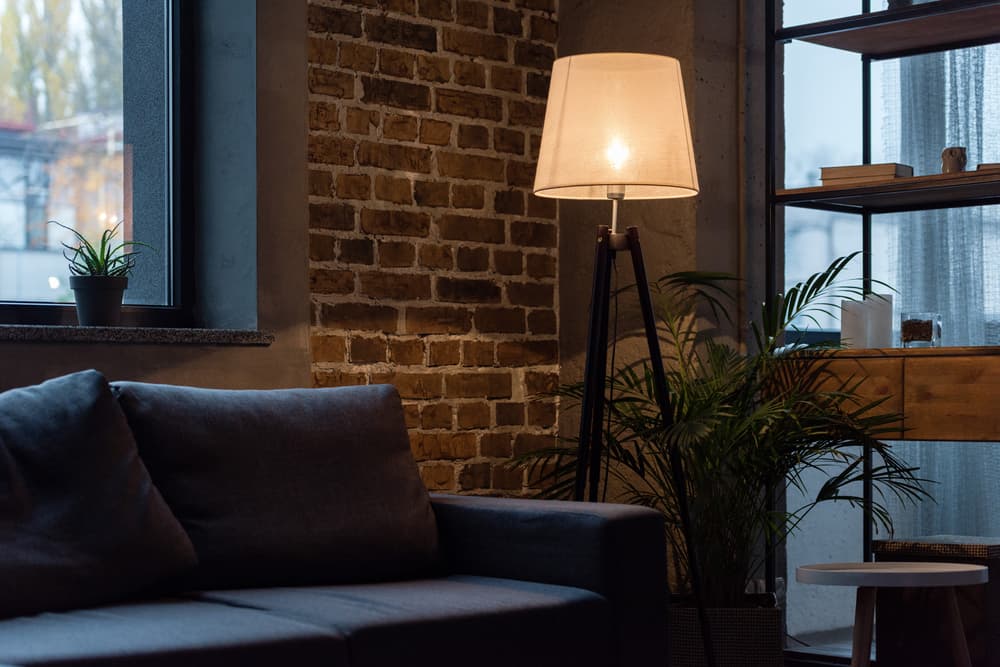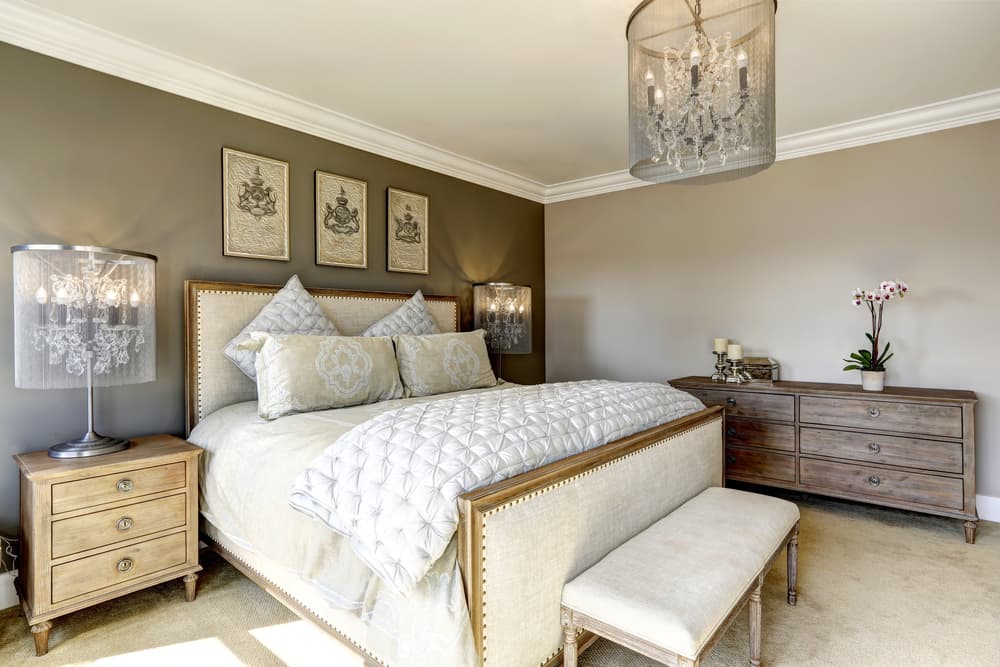Lighting up your home: a guide to choosing the right lamp
Consider the purpose
The initial step in choosing a lamp is to determine its intended use. This means considering whether the lamp is for a specific task, like reading or writing, or for ambient lighting to create a particular mood in a room. Task lighting needs practical functionality since it aids specific activities, while ambient lighting can enhance the aesthetic appeal and atmosphere. Technology advances have expanded the realm of lighting options, with wireless or cordless lamps being widely popular. These lamps offer flexibility, making it effortless to relocate them as space requirements or design preferences change.
Style and aesthetic
The presence of lamps heightens the visual appeal of a house’s interior design. Enhancing the room’s aesthetic by selecting a design that complements the current decor will enhance its attractiveness. From sleek, modern designs that reflect contemporary tastes to vintage or industrial styles that celebrate historical narratives, lamps can be signature pieces in any room. Understanding aesthetic trends can spark creativity, inspiring you to incorporate elements you hadn’t previously considered. Global design platforms often highlight exciting trends that reinvent old styles with a twist or introduce completely novel concepts that push the boundaries of traditional design.
Size matters
The size of your chosen lamp should be proportionate to the piece of furniture it inhabits and the room’s dimensions. A large lamp on a relatively small table might appear awkward and dominate the space, creating an imbalance. Conversely, an undersized lamp in a sizable room may fail to provide adequate lighting, losing its functionally and aesthetically significant. As a guideline, for a harmonized look, the lamp’s shade diameter should ideally be around two-thirds the size of the lamp base to ensure that the fixture maintains a well-balanced appearance in your room.

Cordless options
Cordless lamps have revolutionised the lighting industry by providing portability without the complexity of cords and outlets. Ideally suited for impromptu gatherings such as outdoor parties on the patio or intimate dinners on a deck, these lamps operate independently from electrical outlets, allowing for strategic placement in any corner that could benefit from additional light. With rechargeable battery technology, these lamps serve a dual purpose: providing lighting solutions and minimising energy consumption. By embracing these modern solutions, users can enhance the usability of diverse living spaces from cosy nooks to expansive outdoor patios and gardens.
Energy efficiency
Switching to energy-efficient lighting is a trend and a necessity in creating sustainable living environments. LED bulbs are heralded for their efficient performance and significantly reduced power consumption compared to traditional incandescent bulbs. This reduction in power usage leads to lower electricity bills and contributes positively to conservation efforts and environmental sustainability. Embracing energy-efficient lighting fixtures ensures that your home remains comfortably lit while prioritising ecological responsibility. Understanding the broader implications of energy conservation can help guide better choices in home fittings to support sustainable practices.

Cost vs. value
When purchasing a lamp, it’s essential to consider both the initial cost and its overall value. While budget constraints are natural, they should not come at the expense of quality. A slightly higher upfront investment can improve performance, style, and durability, providing more excellent value over the lamp’s lifespan. Evaluating the cost-to-value ratio involves an analysis of durability, style, functionality, and savings derived from energy efficiency. This approach ensures the chosen lighting serves its immediate purpose and proves to be an economical decision in the long run.
Lighting temperature
The lighting temperature, measured in Kelvin, dramatically influences the ambience and utility of a space. Warm temperature lighting emits a soft glow that creates relaxing and intimate atmospheres, making it ideal for bedrooms and living rooms. On the other hand, cooler, blue-toned lighting enhances concentration and visual clarity, suiting productive areas like kitchens and home offices. Understanding the psychological and functional effects of lighting temperatures can guide the strategic placement and type of lamps, ensuring the lighting looks beautiful and actively serves the space’s intended function.
![[AD] We went to the newly opened Cha Sha Kingston a couple of weeks ago, and wow — taste bud adventure unlocked! The boys devoured the masala fries and chicken tikka rolls, while we couldn’t get enough of that epic kebab butter curry 😍🍛.
It’s amazing value for food this tasty (and everyone left happy and VERY full!).
Delicious food, vibrant vibes and incredible value — the perfect combo for your next meal.
📍Cha Sha Kingston
43 Surbiton Road, KT1 2HG
🌐 chasha.co.uk
Other Cha Sha locations in Birmingham, Ilford, Southampton and Wembkey
#ChaSha #ChaShaKingston #KingstonEats #FoodieFinds #UKFoodie #FoodReview #KingstonUponThames #FamilyEats #FamilyDining #FoodieKids](https://suburban-mum.com/wp-content/uploads/2016/02/574770541_18560351146016840_6855048070839528040_n-180x320.jpg)

![[AD] We’re a cricket-mad family, so we’re buzzing that @thehundred is back this August! 🏏🔥
To get ready, M tried out the official FREE Activity Pack — and it’s brilliant! 🙌
Packed with fun games, creative challenges and sporty tasks, it’s perfect for getting kids hyped whether you’re at home or on the go.
👉Download yours now (link in bio)
@londonspirit @ovalinvincibles #EveryMomentCounts #TheHundred
#EnglandCricket #CricketFamily #TheHundredCricket #LondonBloggers #Cricket #CricketIsLife #kidsfun](https://suburban-mum.com/wp-content/uploads/2022/11/505472555_18531279601016840_7092520074819907569_n-180x320.jpg)



![[AD - Press visit]
We enjoyed the glorious sunshine this weekend with a trip to Brighton. We went on the @brightoni360official which is right by the sea front.
The i360 pod take a slow journey up, allowing you to take in views across Brighton and the South Downs 450ft above ground. There’s a bar inside with drinks and snacks available to purchase and the experience lasts 25 minutes.
Afterwards, we headed to the open air roller rink for a roller skating session!
The roller rink is:
⭐ Suitable for over 5s
⭐ £6.50 if you have your own skates or £9.50 if you need to hire them
⭐ 45 minutes per session
Full details to visit the i360 + skating
📍 Brighton i360, Lower Kings Road, Brighton BN1 2LN
🚗 Parking nearby (we parked in the Regency Square Car park)
🎟️ Prices start from £25.40 for an adult and £16.90 for a child
🕐 Opening hours are currently Sun-Fri 10.30am-18.30pm and until 19.30pm on Saturdays
☕️ Bar inside the i360, cafe and gift shop
Book tickets here:
https://tickets.brightoni360.co.uk/tickets/?_ga=2.195305772.1869001490.1689671753-1757164059.1689671753/#events?eventid=157](https://suburban-mum.com/wp-content/uploads/2015/04/417980235_313576471048632_3682382982231216432_n.jpg)

![[AD] ***Summer of fun at Barracudas Activity Camps!****
There is plenty for kids to do at @barracudas_activity_day_camps
From Tennis, Archery, Swimming, Motor Sports and more you can be sure that there will be something for kids aged 4.5-14. ⚽🏈🥅🎾🏓🏎️🏹🏊♂️🏉
You can book on a day by day basis - so it can fit in with any other days out/activities you have planned and there are early drop off and late pickup options available. Barracudas are also Ofsted registered so you can use your Childcare Vouchers too.
⭐⭐⭐Get £20 off a week or £4 off a day using my discount code: MARIA20⭐⭐⭐
#BarracudasActivityDayCamp #BarracudasActivityCamp #BarracudaAmbassadors #SummerHolidays #SchoolHolidays #Summer2023 #SummerCamp #DayCare #Camp #KidsCamp #surreymummy #surreymums #SummerOfFun #ActivityCamps #HolidayCamps #Childcare #SchoolHolidays #schoolholidaycamps](https://suburban-mum.com/wp-content/uploads/2024/07/353583570_625625966167953_545896259645102575_n.jpg)



![[AD] We have some super exciting news...we have been chosen to be Laser Quest Ambassadors, and the boys are over the moon!
We are really lucky that our local Laser Quest (@laserquestkingston) is just around the corner from us. It means we can pop in of a weekend or anytime during the school holidays, and with summer just around the corner, I know Laser Quest will be one of our go-to places for some family fun.
As well as games of Laser Quest, there are also VR experiences and arcade amusements too. To find out a bit more about how Laser Quest works, you can read my blog post: https://www.suburban-mum.com/laser-quest-kingston/ (clickable link in bio)
Don't forget to keep an eye out for our Laser Quest posts - I'm going to be giving away two family passes to use at Laserquest Kingston!
If you can't wait and want to head down to Laser Quest to try it out, use the code SUMMER30 for 30% off your booking. The code is valid from now until the end of August 2023 and can be used on Laser Quest games and birthday party bookings.
#LaserquestAmbassador #Laserquest #LaserquestKingston #ActivitiesForKids #FamilyFun #DaysOutWithKids #Lasertag #LaserquestVR #Kingston #ThingsToDoInKingston #SurreyFamilyDaysOut #ThingsToDoWithKids #RainyDayFun #SurreyMummy #SurreyLife #LifeWithKids #LifeWithBoys #familyfunday](https://suburban-mum.com/wp-content/uploads/2015/04/353230107_797358078406942_2405522556733455165_n.jpg)

![[AD] The sun has finally made an appearance and the boys have been making the most of it by spending it
in the garden.
They’re go-to is always football and they’ve been trying to improve their aim and accuracy with the new Messi Foldable Footlball goal from the #MessiTrainingSystem range.
I love the fact the goal is foldable, making it easy to store away when not in use. It is also lightweight so you can effortlessly pack it up and take it to the park or to a friend’s house.
The Messi Foldable Football Goal retails at £36 and can be purchased from @argos
You can read my full review here: https://www.suburban-mum.com/messi-foldable-football-goal/
#TrainLikeMessi #FoldableFootballGoal #FootballSkills #OutdoorFun #LionelMessi #LeoMessi #FootballAtHome #OutdoorKids #JustGetOutside #OutdoorsAndFree #ScreenFreeKids #WhateverTheWeatherKids @flair_gp](https://suburban-mum.com/wp-content/uploads/2015/04/341194882_615024710178056_41977149395989448_n.jpg)

![[AD] We are absolutely thrilled to announce that we are Barracuda Ambassadors again this year.
With Easter just around the corner, the boys were sent the @barracudas_activity_day_camps new camp kit in preparation for the school holidays.
There’s a wide range of activities for kids aged 4.5 - 14 including Tennis, Archery, Basketball, Arts & Crafts and more.
If you like the sound of Barracudas, find out more over on their website. You can also save £20 a week or £4 a day, using my discount code: MARIA20](https://suburban-mum.com/wp-content/uploads/2024/07/336812306_765234558514317_685553691647241974_n.jpg)


![[AD - Gifted]
Last weekend we were invited to try out @tsarettaspice’s new Bottomless Brunch menu and I can tell you it was thumbs up all round!
There’s a good choice tapas on offer from Punjabi fish fingers, Indo Chinese Chicken to Spiced Lamb Scotch Eggs and Manchurian Cauliflower (which was amazing!)
If you’re local to Twickenham and fancy giving them a try here’s are the details.
Tsaretta Spice Bottomless Brunch
⭐️£37.50 per head for bottomless Prosecco or cocktail of the day
⭐️£55 per head for bottomless Champagne
⭐️ Food included: 4 tapas selections and dessert or 2 tapas selections, a pav or naanwich and dessert
⭐️ Non-alcohol brunch is also available
Tsaretta Spice
55 Church Street
Twickenham
TW1 3NR
You can also read our full review over on the blog (link in bio)](https://suburban-mum.com/wp-content/uploads/2024/07/334565436_5960402314015030_663031098700829518_n.jpg)



